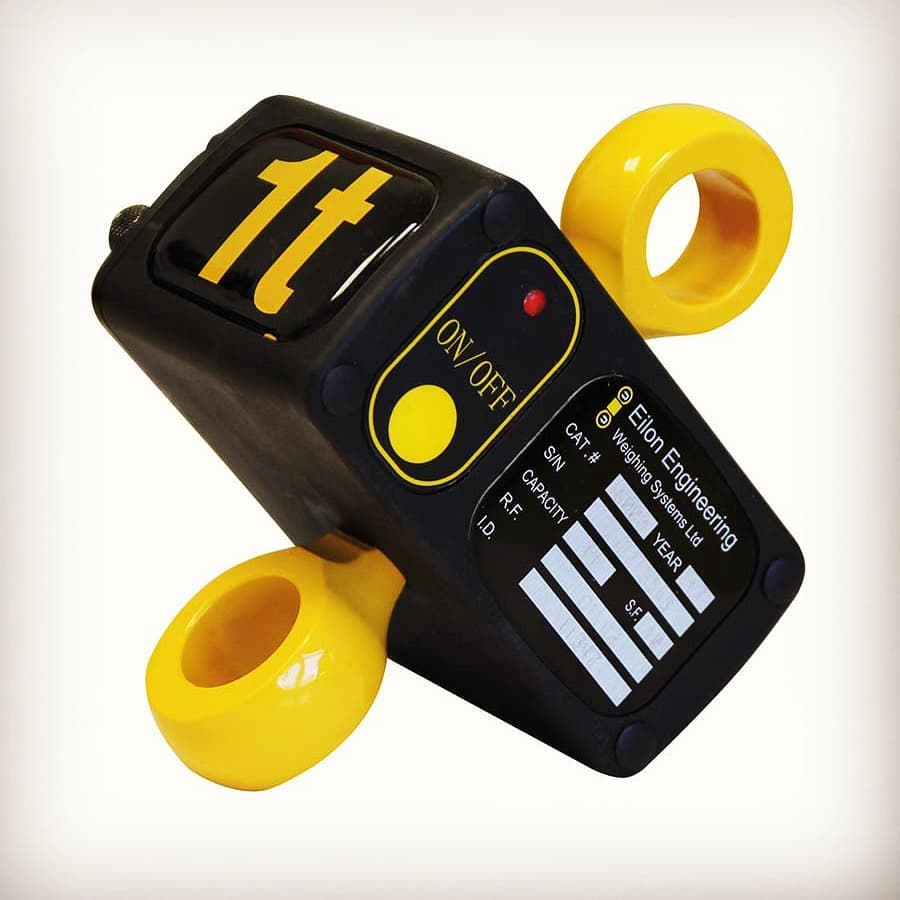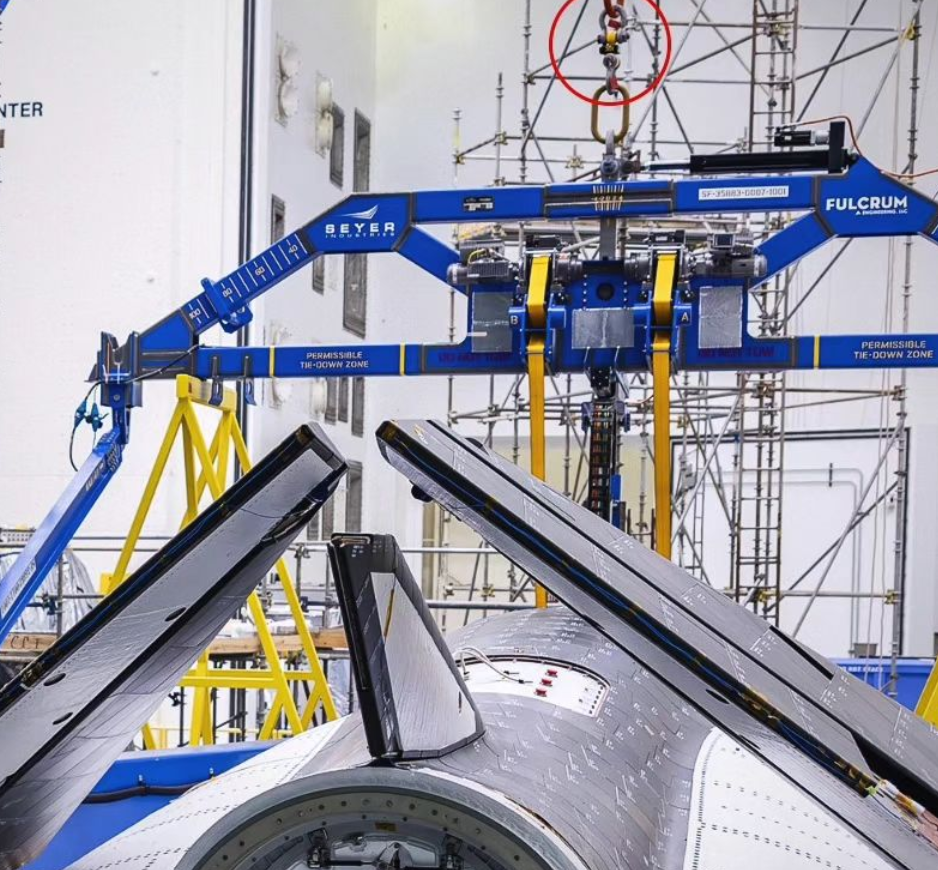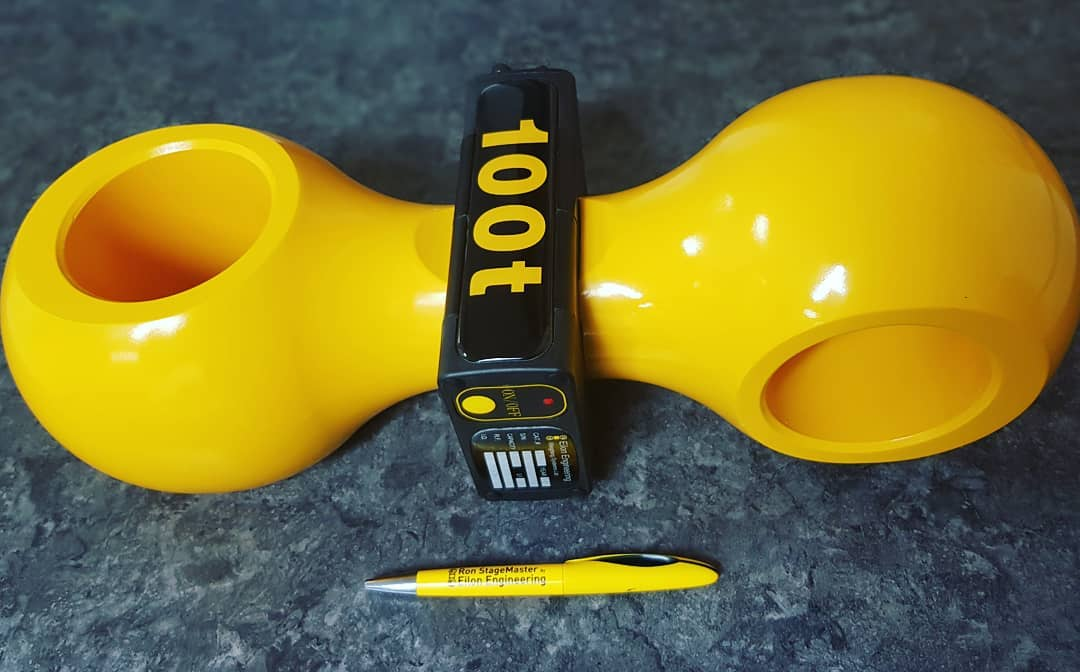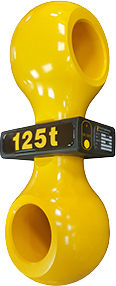Rigging Load Cell
What is a rigging load cell, and why is it essential in modern industries?
Rigging load cells are a specialized piece of equipment used to measure weight, force, or tension in a range of industrial applications and across various sectors and industries. Their ability to provide accurate, real-time weight data with high precision makes them a necessity in areas such as quality control, manufacturing, construction, transportation, and many others.
In fields like construction, logistics, and heavy equipment operations, rigging load cells allow businesses to quickly, accurately, and safely weigh heavy equipment. They help ensure the safety and efficiency of lifting operations, as well as the monitoring and recording of the weight of products or materials.
How does a rigging load cell work? (key benefits and technology)
Rigging load cells, like most digital load cell sensors, are composed of a few components: the load cell body, the strain gauge, and the electronics. The load cell body is the weight-bearing element of the system and is made of a metal such as aluminum or stainless steel. It has holes at each end for shackles to be attached.
The strain gauge is the second component. This is a special sensor that measures an object's deformation when subjected to external forces. It typically consists of a thin metallic foil or wire in a grid pattern attached to the object's surface. When force is applied to the load cell body, i.e., when an object is lifted to be weighed, the load cell expands slightly, causing changes in the strain gauge’s electrical resistance.
This resistance change produces a voltage output proportional to the applied force, thus allowing for accurate measurements. The signal from the strain gauge is then output and converted into a readable measurement like pounds or kilograms, which is then displayed on an electronic readout.
Rigging load cells have several benefits
Accuracy
Electronic rigging load cells, like those manufactured by Eilon Engineering, are highly accurate—much more so than normal analog scales. The strain gauge technology mentioned above allows for more precise measurement than the spring and dial of an analog scale.
For example, a standard analog crane scale will have an accuracy of 0.5% of the full scale. Compare that to Ron Crane Scales with a standard accuracy of 0.1% of full scale.
Durability
High-quality load cells are highly durable. For example, all Eilon Engineering load cell bodies are made of aerospace-grade steel. We also ensure that all of our load cells are fatigue-rated. This means the system can withstand an unlimited number of load cycles, so long as it has never been overloaded.
Safety
Rigging load cells allow operators to monitor the loads from a safe distance. This is especially true for wireless rigging load cells. For example, our Ron 2501 model can transmit measurements from the load cell body to the handheld display at a safe distance of up to 150 meters (in prime outdoor conditions with a clear line of sight).
Further, having no cable eliminates the risk of accidents, which can occur should the cable become entangled.
Portability
Another advantage to load cells over platform scales is their portability. While weighing with a platform scale requires bringing the object to the scale, with load cells, you can easily transport them around the job site.
Our range of industrial load cells are incredibly compact relative to their lifting capacity. For example, while a typical 10-ton analog dynamometer might weigh about 50 pounds, an equivalent capacity Ron load cell weighs about 35 pounds.

Common applications of rigging load cells across industries
Rigging load cells play a key role in many industries where overhead lifting solutions are needed.
Construction and heavy lifting
In the construction industry, load cells are crucial for ensuring safety and accuracy during lifting operations. They are used in crane load measurement to make sure lifted loads never exceed the crane's rated capacity.
Aerospace and defense
In aerospace and defense, precision is paramount. Load cells are used in testing and monitoring different components including aircraft parts and rocket engines. They measure the forces applied to these components during testing, which helps engineers adhere to stringent safety and performance standards.
Oil and gas
Operations in the oil and gas industry often take place in harsh environments. Load cells can be used to measure the forces involved in drilling, lifting, and other operations. Eilon Engineering’s robust rigging load cells are designed to withstand harsh conditions including high temperatures and corrosive environments. This makes them ideal for use in offshore drilling rigs, pipelines, and other infrastructure projects.
Entertainment and events
In the entertainment industry, particularly in stage rigging, load cells are the key component of the load monitoring systems used to monitor equipment like lighting rigs, sound systems, and large video screens. Ensuring that these elements are securely and accurately positioned is crucial for safety and performance. Eilon Engineering’s wireless load cells provide real-time monitoring, allowing technicians to make adjustments in real-time, keeping crowds, crew, and performers safe.
Transportation and logistics
Load cells also play a role in transportation and logistics, for example in weighing cargo loads. Accurate weight measurement is vital for ensuring that vehicles are not overloaded, which can lead to safety risks and legal penalties.

How to choose the right rigging load cell for your needs
Finding the perfect rigging load cell for your needs might sound like a difficult process, but it doesn’t have to be.
To start with, choose a reputable company with a proven track record of safety and quality. After all, safety is always the top concern so you’ll want a system you can trust. At Eilon Engineering, our R&D, manufacturing, and calibration laboratory are certified according to the ISO 9001 total quality management standard and audited on-site by Lloyd’s Register LRQA.
Next, you’ll need to decide on the maximum lifting capacity your application calls for.
Eilon Engineering offers a range of capacities including high-capacity load cells. Our weighing systems range from 0.5 tons to 300 tons. Choose a capacity that will suit all of your potential lifting applications, but remember never lift more than the max capacity. This is dangerous to anyone in the area and can permanently damage the system.
Other factors you’ll want to consider are things like added environmental protection, or other optional add-ons. These can include things like data logging, dampening for dynamic loads, and more.
You should also decide if you need a wired or wireless system, and on the size and type of display you need.
Maintenance tips for rigging load cells: ensuring long-term efficiency
Once you decide on a system, you’ll need to know about maintenance and upkeep.
One of the most important aspects of load cell maintenance is calibration. This is the process of ensuring the system accurately measures lifted loads. Calibration involves using known weights to compare against the scale's readings. If there's a discrepancy, adjustments are made to bring the scale back to within an acceptable level of weight accuracy tolerance. This ensures safe and reliable weight readings for critical lifting operations.
Other routine maintenance is quite simple for Ron systems. Make sure to change the batteries at the end of their life. Also, keep the system clean from excessive dirt and dust.
Eilon Engineering systems are designed to last a lifetime, so with minimal maintenance your system should provide you with years of reliable use.

FAQs about rigging load cells: all your questions answered
Q: What types of weighting systems do you offer?
A: Our weighing systems include both dynamometers and crane scales, both of which make use of a load cell body and a remote display.
Q: What’s the difference between a crane scale and a dynamometer?
A: At Eilon Engineering, the primary difference between the two is that crane scales have a lower hook and upper shackle, while dynamometers have both upper and lower shackles.
Q: What industries use load cells and crane scales?
A: They’re used in a wide range of industries like aerospace, construction, manufacturing, entertainment rigging, and oil and gas, among others.
Q: How accurate are your load cells?
A: Our load cells and crane scales are highly accurate: 0.1% of the full-scale
Q: Do you provide custom solutions?
A: Yes, we offer tailored load cell and crane scale solutions to meet unique industry requirements. Contact us to discuss your specific needs.
Q: How far can wireless systems transmit data?
A: Our wireless load cells and crane scales can transmit data up to 150 meters (in prime outdoor conditions with a clear line of sight), and even farther as an optional add-on.
Q: What safety features do your load cells have?
A: Our load cells are designed with overload protection, durable construction, and safety factors of 5:1 or higher, ensuring safe operation under demanding conditions.
Q: Are your crane scales weatherproof?
A: Yes, many of our crane scales and load cells are weatherproof and designed to operate in harsh environments.
Q: How often should I calibrate my load cell or crane scale?
A: We recommend calibrating your equipment annually or more frequently if used in critical applications or harsh environments.










.png) Barcelona Jan 30-Feb 2
Barcelona Jan 30-Feb 2